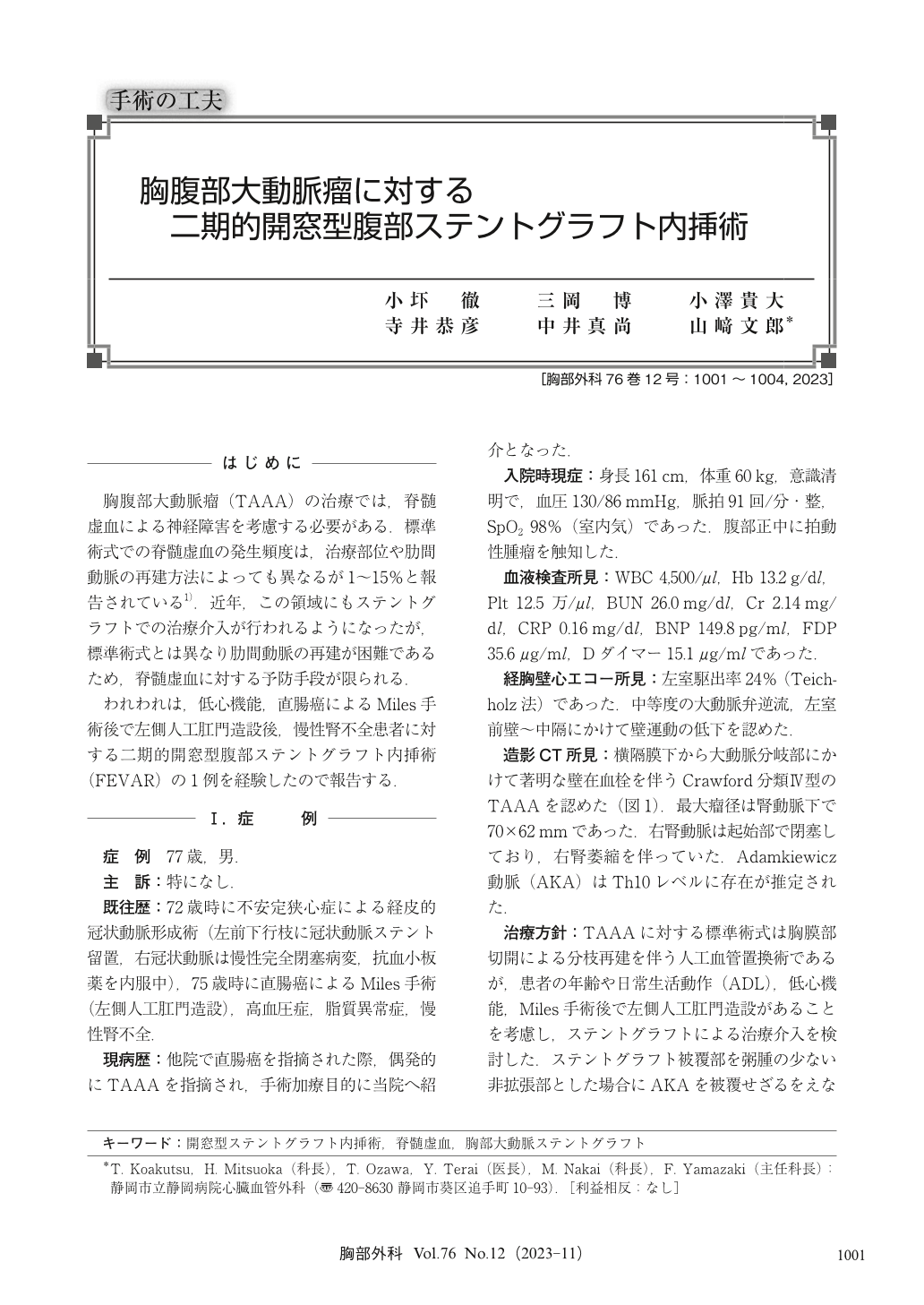Japanese
English
- 有料閲覧
- Abstract 文献概要
- 1ページ目 Look Inside
- 参考文献 Reference
胸腹部大動脈瘤(TAAA)の治療では,脊髄虚血による神経障害を考慮する必要がある.標準術式での脊髄虚血の発生頻度は,治療部位や肋間動脈の再建方法によっても異なるが1~15%と報告されている1).近年,この領域にもステントグラフトでの治療介入が行われるようになったが,標準術式とは異なり肋間動脈の再建が困難であるため,脊髄虚血に対する予防手段が限られる.
Fenestrated endovascular repair (FEVAR) can be a treatment option for thoraco-abdominal aneurysm (TAAA), especially in the cases with high surgical risks. Spinal cord ischemic injury (SCI) continues to be the most devastating complication, that has multifactorial etiologies including embolic events and coverage of Adamkiewicz’s artery (AKA). Recently, we experienced a case of Crawford III TAAA. The 77 year-old male had multiple comorbidities including recent myocardial infarction, chronic heart failure with reduced ejection fraction, and an end-stage renal disease. A colostomy was located on the left side of the abdomen after the surgical resection of rectal cancer. The AKA was originated from the intercostal artery at the level of the tenth thoracic vertebra (THV), which was intended to be covered by a stent-graft. To reduce the risk of SCI, FEVAR was scheduled in a staged fashion, with the proximal coverage up to the tenth THV and a branch-typed endovascular reconstruction of the celiac artery performed as the first stage treatment. The completion repair was achieved in 4 weeks, with the remaining superior mesenteric and renal arteries successfully stented. Neither SCI nor endoleak was detected periprocedurally.

© Nankodo Co., Ltd., 2023


